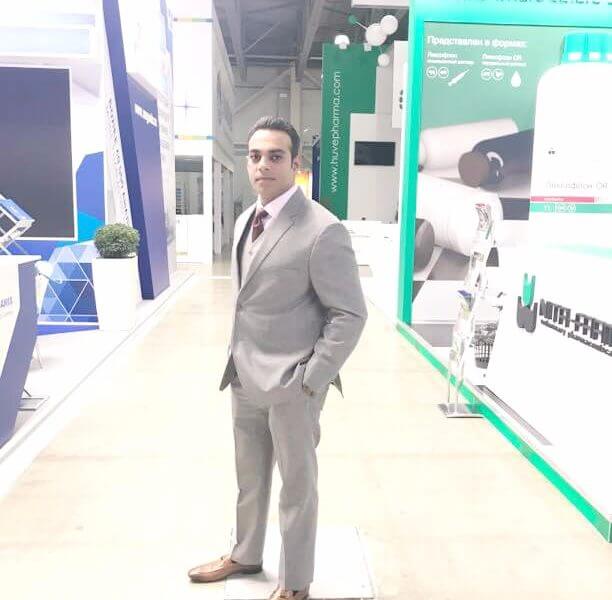

Dr Ashok Rajgopal, utive Director & Chairman, Surgeon, Fortis Bone and Joint Institute, Delhi.
The most frequently quoted benefits for robotic surgery is that it can produce accurate minimally invasive surgery which can actively constrain the surgeon to a safe region, writes Dr Ashok Rajgopal, utive Director & Chairman, Surgeon, Fortis Bone and Joint Institute, Delhi.
From the times of being a part of Sci-Fis in the 70s-80s, robotic technology has become a reality and a part of our lives in more forms than we can count and imagine.

As far as medical advancements are concerned, the use of robotic technology is gaining rapid popularity and surgeons are making use of them to conduct complex surgeries to have successful surgical outcomes and immense benefits for their patients.
The NAVIO PFS surgical system, to mention, is the latest robotic intervention in the field of joint replacement surgeries. NAVIO enables the surgeon to fix only the damaged part of the knee to absolute perfection, saving all the other normal structures of the joint. It allows for patients to walk pain free within four to five hours of their operation. 
Using the NAVIO PFS surgical system, surgeons at Fortis Bone and Joint Institute, FMRI, Gurugram have carried out 12 successful joint replacement surgeries, under Dr Ashok Rajgopal, Chairman, FBJI. In each of these cases, to the patient and familys delight, the robotic assisted joint replacement surgery enabled mobility without significant pain within four hours of the surgery on an average.

Perceived benefits of overall surgical robots:
The most frequently quoted benefits for robotic surgery is that it can produce accurate minimally invasive surgery which can actively constrain the surgeon to a safe region. Complex trajectories can be undertaken particularly using snakelike flexible arms to reach areas which are otherwise impossible to access. Special purpose robots can allow surgery within the narrow bore of an x-ray or MR scanner.
Handheld robotics: The NAVIO hand piece accurately removes bone identified by the surgeon approved, patient specific plan.
Portable cart: NAVIO can be easily moved from OR to OR to support the demand for efficiency needed by orthopedic programmes.
Multiple implant options: For both partial and total knee replacement procedures
Economically sound: A cost effective approach to building a cutting-edge surgical practice, designed to deliver more predictable outcomes
Patient awareness: Most patients who have undergone the procedure under the latest technology have delayed surgical intervention/option due to their fears and apprehensions about surgical outcomes. Some have tolerated the pain for a decade to avoid coming under the scalpel.
These patients need psychological support from family and counselling before they can finally agree to undergo a surgery. Their biggest fear remains that post their surgery, their movements might became difficult and painful during regular household chores.
As a result, all of them opted for robotic-assisted joint replacement after learning about the technology from the doctors. With advanced robotics entering the field of orthopedics, patients can now receive treatment in a manner similar to day care surgeries.
Need for Health Insurance providers to include such advanced elective technologies:
There was a time when laparoscopic surgeries were looked at with scepticism before policy-makers realised it actually gave better surgical outcomes and ensured less blood loss with reduced hospitalisation and faster recoveries for the patients. Similarly, as an acceptance of such advancements in medical procedures, health insurance providers need to work towards making robotic surgeries for routine elective surgeries a part of insurance covers for their beneficiaries.
Future of robotics:
The NAVIO Robotics“assisted system reduces the possibilities of human error and ensures perfect alignment leading to the longevity of the joint implant. Patients and their caregivers are happy with the outcome from such world“class cutting edge technology. Patients are discharged and return home within three days post their surgeries and undergo physical rehabilitation to get back an active lifestyle.
With robot assisted joint replacement, we are driving this leadership ahead and ensuring that we are at par with the world because this technology has been launched in India immediately after the US and we are only the second country in the world to adopt it successfully.
After the earlier success of larger complex systems, it is probable that progress in the next decade will be incremental rather than revolutionary, leading to many different smaller simple robotic systems across a wide range of applications. Robotic surgery is thus likely to see a change of direction but will become more clinically relevant.
(The views and opinions expressed in this article are those of the authors and do not necessarily reflect the official policy or position of Elets Technomedia Pvt Ltd)
Be a part of Elets Collaborative Initiatives. Join Us for Upcoming Events and explore business opportunities. Like us on Facebook , connect with us on LinkedIn and follow us on Twitter , Instagram.












